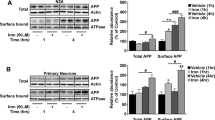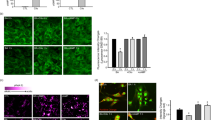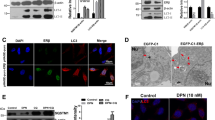Abstract
Aberrant interactions of copper and zinc ions with the amyloid-β peptide (Aβ) potentiate Alzheimer's disease (AD) by participating in the aggregation process of Aβ and in the generation of reactive oxygen species (ROS). The ROS production and the neurotoxicity of Aβ are associated with copper binding. Metallothionein-3 (Zn7MT-3), an intra- and extracellularly occurring metalloprotein, is highly expressed in the brain and downregulated in AD. This protein protects, by an unknown mechanism, cultured neurons from the toxicity of Aβ. Here, we show that a metal swap between Zn7MT-3 and soluble and aggregated Aβ1–40–Cu(II) abolishes the ROS production and the related cellular toxicity. In this process, copper is reduced by the protein thiolates forming Cu(I)4Zn4MT-3, in which an air-stable Cu(I)4-thiolate cluster and two disulfide bonds are present. The discovered protective effect of Zn7MT-3 from the copper-mediated Aβ1–40 toxicity may lead to new therapeutic strategies for treating AD.
This is a preview of subscription content, access via your institution
Access options
Subscribe to this journal
Receive 12 print issues and online access
$259.00 per year
only $21.58 per issue
Buy this article
- Purchase on Springer Link
- Instant access to full article PDF
Prices may be subject to local taxes which are calculated during checkout




Similar content being viewed by others
References
Adlard, P.A. & Bush, A.I. Metals and Alzheimer's disease. J. Alzheimers Dis. 10, 145–163 (2006).
Bush, A.I. et al. Rapid induction of Alzheimer Aβ amyloid formation by zinc. Science 265, 1464–1467 (1994).
Huang, X. et al. Cu(II) potentiation of alzheimer Aβ neurotoxicity. Correlation with cell–free hydrogen peroxide production and metal reduction. J. Biol. Chem. 274, 37111–37116 (1999).
Cuajungco, M.P. et al. Evidence that the β–amyloid plaques of Alzheimer's disease represent the redox–silencing and entombment of Aβ by zinc. J. Biol. Chem. 275, 19439–19442 (2000).
Dikalov, S.I., Vitek, M.P. & Mason, R.P. Cupric–amyloid β peptide complex stimulates oxidation of ascorbate and generation of hydroxyl radical. Free Radic. Biol. Med. 36, 340–347 (2004).
Opazo, C. et al. Metalloenzyme-like activity of Alzheimer's disease β–amyloid. Cu-dependent catalytic conversion of dopamine, cholesterol, and biological reducing agents to neurotoxic H2O2 . J. Biol. Chem. 277, 40302–40308 (2002).
Doraiswamy, P.M. & Finefrock, A.E. Metals in our minds: therapeutic implications for neurodegenerative disorders. Lancet Neurol. 3, 431–434 (2004).
Vašák, M. & Hasler, D.W. Metallothioneins: new functional and structural insights. Curr. Opin. Chem. Biol. 4, 177–183 (2000).
Uchida, Y., Takio, K., Titani, K., Ihara, Y. & Tomonaga, M. The growth inhibitory factor that is deficient in the Alzheimer's disease brain is a 68 amino acid metallothionein-like protein. Neuron 7, 337–347 (1991).
Öz, G., Zangger, K. & Armitage, I.M. Three-dimensional structure and dynamics of a brain specific growth inhibitory factor: metallothionein–3. Biochemistry 40, 11433–11441 (2001).
Faller, P. et al. Evidence for a dynamic structure of human neuronal growth inhibitory factor and for major rearrangements of its metal–thiolate clusters. Biochemistry 38, 10158–10167 (1999).
Wang, H. et al. Solution structure and dynamics of human metallothionein–3 (MT–3). FEBS Lett. 580, 795–800 (2006).
Uchida, Y., Gomi, F., Masumizu, T. & Miura, Y. Growth inhibitory factor prevents neurite extension and death of cortical neurons caused by high oxygen exposure through hydroxyl radical scavenging. J. Biol. Chem. 277, 32353–32359 (2002).
Yu, W.H., Lukiw, W.J., Bergeron, C., Niznik, H.B. & Fraser, P.E. Metallothionein III is reduced in Alzheimer's disease. Brain Res. 894, 37–45 (2001).
Irie, Y. & Keung, W.M. Metallothionein–III antagonizes the neurotoxic and neurotrophic effects of amyloid β peptides. Biochem. Biophys. Res. Commun. 282, 416–420 (2001).
Meloni, G., Faller, P. & Vašák, M. Redox silencing of copper in metal-linked neurodegenerative disorders: reaction of Zn7 metallothionein–3 with Cu2+ ions. J. Biol. Chem. 282, 16068–16078 (2007).
Hou, L. & Zagorski, M.G. NMR reveals anomalous copper(II) binding to the amyloid Aβ peptide of Alzheimer's disease. J. Am. Chem. Soc. 128, 9260–9261 (2006).
Syme, C.D., Nadal, R.C., Rigby, S.E. & Viles, J.H. Copper binding to the amyloid–beta (Aβ) peptide associated with Alzheimer's disease: folding, coordination geometry, pH dependence, stoichiometry, and affinity of Aβ–(1–28): insights from a range of complementary spectroscopic techniques. J. Biol. Chem. 279, 18169–18177 (2004).
Guilloreau, L. et al. Structural and thermodynamical properties of CuII amyloid–beta16/28 complexes associated with Alzheimer's disease. J. Biol. Inorg. Chem. 11, 1024–1038 (2006).
Fawcett, T.G., Bernarducci, E.E., Kroghjespersen, K. & Schugar, H.J. Charge–transfer absorptions of Cu(II)–imidazole and Cu(II)–imidazolate chromophores. J. Am. Chem. Soc. 102, 2598–2604 (1980).
Pountney, D.L., Schauwecker, I., Zarn, J. & Vašák, M. Formation of mammalian Cu8–metallothionein in vitro: evidence for the existence of two Cu(I)4–thiolate clusters. Biochemistry 33, 9699–9705 (1994).
Tycko, R. Molecular structure of amyloid fibrils: insights from solid-state NMR. Q. Rev. Biophys. 39, 1–55 (2006).
House, E. et al. Aluminium, iron, zinc and copper influence the in vitro formation of amyloid fibrils of Aβ42 in a manner which may have consequences for metal chelation therapy in Alzheimer's disease. J. Alzheimers Dis. 6, 291–301 (2004).
Karr, J.W., Kaupp, L.J. & Szalai, V.A. Amyloid–beta binds Cu2+ in a mononuclear metal ion binding site. J. Am. Chem. Soc. 126, 13534–13538 (2004).
Atwood, C.S. et al. Dramatic aggregation of Alzheimer Aβ by Cu(II) is induced by conditions representing physiological acidosis. J. Biol. Chem. 273, 12817–12826 (1998).
Dong, J. et al. Metal binding and oxidation of amyloid–β within isolated senile plaque cores: Raman microscopic evidence. Biochemistry 42, 2768–2773 (2003).
Talmard, C., Guilloreau, L., Coppel, Y., Mazarguil, H. & Faller, P. Amyloid–beta peptide forms monomeric complexes with CuII and ZnII prior to aggregation. ChemBioChem 8, 163–165 (2007).
Mekmouche, Y. et al. Characterization of the ZnII binding to the peptide amyloid–β1–16 linked to Alzheimer's disease. ChemBioChem 6, 1663–1671 (2005).
Hardy, J. & Selkoe, D.J. The amyloid hypothesis of Alzheimer's disease: progress and problems on the road to therapeutics. Science 297, 353–356 (2002).
Smith, D.P. et al. Copper-mediated amyloid–β toxicity is associated with an intermolecular histidine bridge. J. Biol. Chem. 281, 15145–15154 (2006).
Atwood, C.S. et al. Copper mediates dityrosine cross-linking of Alzheimer's amyloid–beta. Biochemistry 43, 560–568 (2004).
Smith, D.P. et al. Concentration dependent Cu2+ induced aggregation and dityrosine formation of the Alzheimer's disease amyloid–beta peptide. Biochemistry 46, 2881–2891 (2007).
Bush, A.I., Moir, R.D., Rosenkranz, K.M. & Tanzi, R.E. Response. Science 268, 1921–1923 (1995).
Cardoso, S.M., Rego, A.C., Pereira, C. & Oliveira, C.R. Protective effect of zinc on amyloid–β 25–35 and 1–40 mediated toxicity. Neurotox. Res. 7, 273–281 (2005).
Butterfield, D.A., Drake, J., Pocernich, C. & Castegna, A. Evidence of oxidative damage in Alzheimer's disease brain: central role for amyloid β–peptide. Trends Mol. Med. 7, 548–554 (2001).
Rice, M.E. Ascorbate regulation and its neuroprotective role in the brain. Trends Neurosci. 23, 209–216 (2000).
Bush, A.I., Pettingell, W.H., Jr., Paradis, M.D. & Tanzi, R.E. Modulation of Aβ adhesiveness and secretase site cleavage by zinc. J. Biol. Chem. 269, 12152–12158 (1994).
Atwood, C.S. et al. Characterization of copper interactions with alzheimer amyloid β peptides: identification of an attomolar–affinity copper binding site on amyloid β 1–42. J. Neurochem. 75, 1219–1233 (2000).
Hasler, D.W., Jensen, L.T., Zerbe, O., Winge, D.R. & Vašák, M. Effect of the two conserved prolines of human growth inhibitory factor (metallothionein–3) on its biological activity and structure fluctuation: comparison with a mutant protein. Biochemistry 39, 14567–14575 (2000).
Hamer, D.H. Metallothionein. Annu. Rev. Biochem. 55, 913–951 (1986).
Belle, C., Rammal, W. & Pierre, J.L. Sulfur ligation in copper enzymes and models. J. Inorg. Biochem. 99, 1929–1936 (2005).
Ohta, T. et al. Synthesis, structure, and H2O2–dependent catalytic functions of disulfide–bridged dicopper(I) and related thioether–copper(I) and thioether–copper(II) complexes. Inorg. Chem. 39, 4358–4369 (2000).
Smith, D.G., Cappai, R. & Barnham, K.J. The redox chemistry of the Alzheimer's disease amyloid β peptide. Biochim. Biophys. Acta 1768, 1976–1990 (2007).
Yoshiike, Y. et al. New insights on how metals disrupt amyloid β–aggregation and their effects on amyloid–β cytotoxicity. J. Biol. Chem. 276, 32293–32299 (2001).
Zou, K., Gong, J.S., Yanagisawa, K. & Michikawa, M. A novel function of monomeric amyloid β–protein serving as an antioxidant molecule against metal–induced oxidative damage. J. Neurosci. 22, 4833–4841 (2002).
Kontush, A. Amyloid–β: an antioxidant that becomes a pro–oxidant and critically contributes to Alzheimer's disease. Free Radic. Biol. Med. 31, 1120–1131 (2001).
Hou, L. et al. Solution NMR studies of the Aβ(1–40) and Aβ(1–42) peptides establish that the Met35 oxidation state affects the mechanism of amyloid formation. J. Am. Chem. Soc. 126, 1992–2005 (2004).
Manevich, Y., Held, K.D. & Biaglow, J.E. Coumarin–3–carboxylic acid as a detector for hydroxyl radicals generated chemically and by gamma radiation. Radiat. Res. 148, 580–591 (1997).
Acknowledgements
This work was supported by Action-Concertée-Integrée INTERFACE Physique-Chimie-Biologie (P.F.), Swiss National Science Foundation grant 3100A0–100246/1 (M.V.), Programme d'Actions Intégrées Germaine de Staël grants 08345VK (M.V. and P.F.) and the Hartmann Müller-Stiftung (M.V.). We thank A. Mari and L. Rechignat for EPR measurements, D. Lavabre for preliminary luminescence experiments and E. Bellard and M. Fix for help in cell viability experiments. We also thank S. Chesnov for recording nano-ESI-MS spectra.
Author information
Authors and Affiliations
Corresponding authors
Supplementary information
Supplementary Text and Figures
Supplementary Figures 1–7, Supplementary Tables 1 and 2, and Supplementary Methods (PDF 486 kb)
Rights and permissions
About this article
Cite this article
Meloni, G., Sonois, V., Delaine, T. et al. Metal swap between Zn7-metallothionein-3 and amyloid-β–Cu protects against amyloid-β toxicity. Nat Chem Biol 4, 366–372 (2008). https://doi.org/10.1038/nchembio.89
Received:
Accepted:
Published:
Issue Date:
DOI: https://doi.org/10.1038/nchembio.89
This article is cited by
-
Copper Redox Cycling Inhibits Aβ Fibre Formation and Promotes Fibre Fragmentation, while Generating a Dityrosine Aβ Dimer
Scientific Reports (2018)
-
The Efficacy and Pharmacological Mechanism of Zn7MT3 to Protect against Alzheimer’s Disease
Scientific Reports (2017)
-
Effects of zinc supplementation and zinc chelation on in vitro β-cell function in INS-1E cells
BMC Research Notes (2014)
-
The multiple antibiotic resistance regulator MarR is a copper sensor in Escherichia coli
Nature Chemical Biology (2014)
-
The molecular mechanism for human metallothionein-3 to protect against the neuronal cytotoxicity of Aβ1–42 with Cu ions
JBIC Journal of Biological Inorganic Chemistry (2013)



